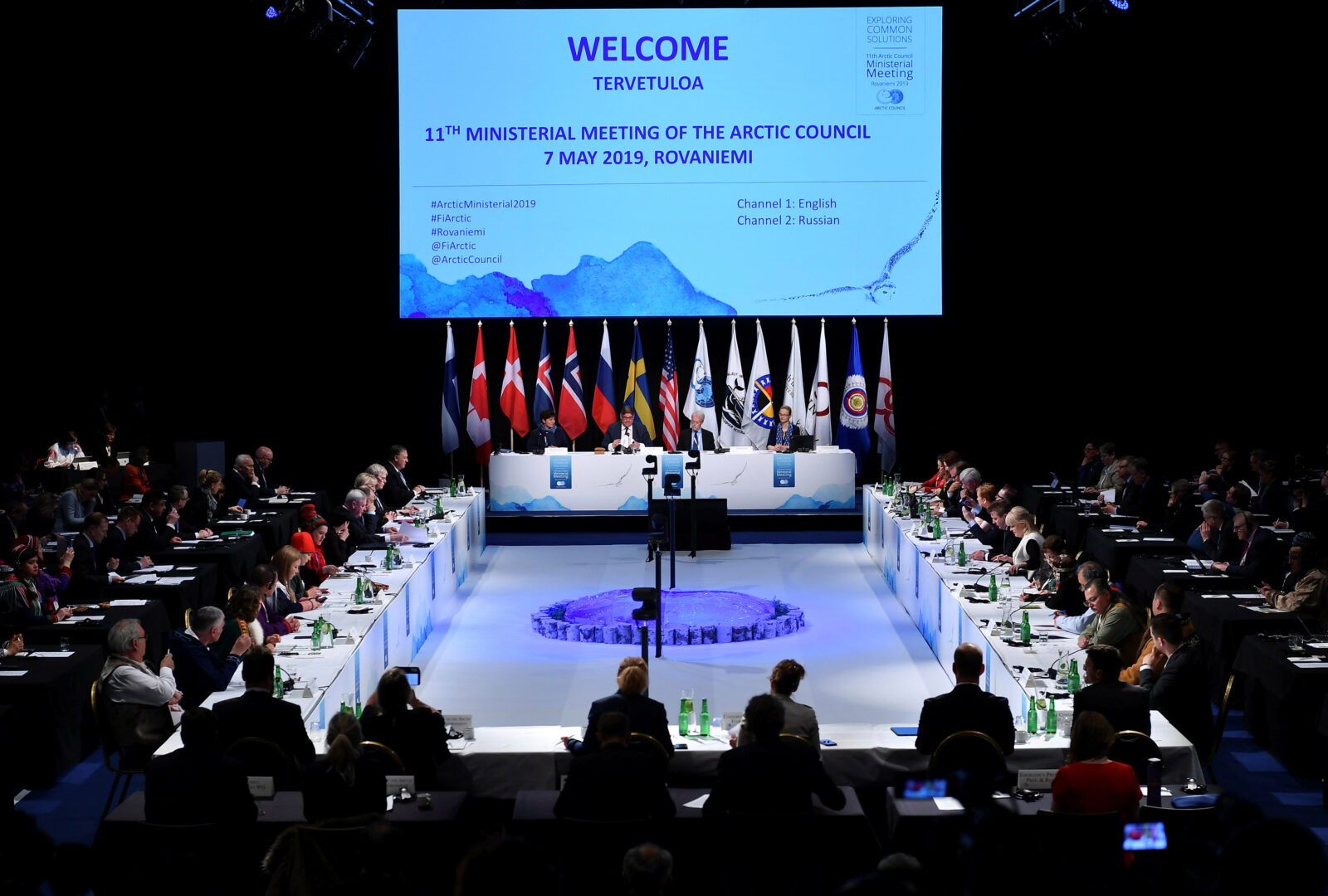Restoring Arctic Exceptionalism: The Path Toward Sustainable Cooperation
On June 11–12, 2025, the Quincy Institute for Responsible Statecraft and the Arctic Institute jointly hosted a workshop and conference between diplomats, experts, Indigenous leaders, scientists, and officials from Arctic nations. The purpose of the workshop and conference was to “restore Arctic exceptionalism” — prevent the militarization of the region, find and pursue opportunities for cooperation between the Arctic’s major powers, and navigate the immediate threat of climate change. This document is a summary of the gathering’s discussions and findings.
From Murmansk to Rovaniemi: The deterioration of Arctic relations
For nearly 30 years, the Arctic has been deemed “exceptional” because the region remained insulated from traditional geopolitical competition. This exceptionalism stemmed from the late Soviet leader Mikhail Gorbachev’s 1987 speech in Murmansk calling for the Arctic to be a “zone of peace.” Gorbachev also called for circumpolar cooperation, demilitarization, and the convening of a “joint Arctic research council,” which went on to inspire the founding of the Arctic Council in 1996. For the majority of the post–Cold War period, the Arctic met Gorbachev’s vision: flourishing as a site for scientific collaboration, Indigenous leadership, and with an absence of military competition.
The political fallout of the war in Ukraine, however, abruptly put an end to the region’s insulation from the conventional demands of geopolitics; in 2022, the Arctic Council’s seven Western member states temporarily suspended full meetings of the Council, leading to declarations that Arctic exceptionalism was dead, disrupted, or corrupted. This suspension was, unfortunately, not the first but rather the most significant and recent break from Arctic exceptionalism.
For years, climate change — and the melting of the Arctic’s prehistoric ice — was no longer a distant threat but an urgent issue changing the geography, lives, and livelihoods of the people in the region. Disputes over climate change, and the question of what to do about it, also led to rifts among the Arctic’s previously cooperative major powers. In 2019, the Arctic Council’s ministerial meeting in Rovaniemi, Finland, failed to produce a joint declaration because then–U.S. Secretary of State Mike Pompeo disagreed with using the term “climate change” in the proposed document.
At the same time, militarization of the region began to rear its ugly head again; rivalry between the United States, Russia, and China intensified, and the Arctic’s melting ice opened up previously inaccessible areas to commercial and military competition. Russia began holding military exercises designed to protect the Northern Sea Route and upgraded the administrative status of its Northern Fleet, establishing the Northern Military District in 2021, which was later subsumed into the larger, reestablished Leningrad Military District following Finland’s accession into NATO in 2023. Russia and China signed a cooperation agreement between their coast guards in 2023 and jointly flew bombers within the Alaskan Air Identification Zone in 2024. The United States, for its part, has indicated interest in annexing Greenland for its natural resources and strategic location, as well as Canada. Finland’s and Sweden’s accession into NATO, and the United States’ bilateral defense agreements with those states, has also shifted the Arctic’s balance of power.
Arctic relations today are in transition. Militarization and competition are increasing but are not yet permanent fixtures. There is the opportunity — if taken advantage of — to reverse this downward trajectory and restore Arctic exceptionalism.
The interconnection of climate change and securitization in the Arctic
Climate change and security, often treated as separate and distinct fields, are inextricably linked in the Arctic. As noted above, it is the Arctic’s changing climate — warming three to four times faster than the rest of the planet — that is leading to new areas and forms of military competition in the region. It is vital, therefore, that Washington incorporate a climatological perspective when assessing its interests and formulating a comprehensive Arctic policy.
Indeed, while the risks from traditional geopolitical competition in the Arctic are significant and growing, the greatest security threat emanating from the Arctic is, in fact, the global ramifications of climate change. The warming of the Earth’s atmosphere, increase in the oceans’ temperature, melting of the Greenland ice sheet, and the release of methane from the Arctic’s permafrost are the most significant concerns that conference participants discussed. The repercussions of these catastrophic phenomena will reverberate from Murmansk to Rovaniemi and Miami to Dhaka. Fundamentally, cooperation, not conflict, must serve as the basis of interaction between the Arctic’s major powers if the region’s exceptionalism is to be restored.
Unfortunately, consistent and serious international cooperation in slowing the warming of the Earth’s atmosphere has been lacking. As a result, alternative measures to counter, rather than prevent, the effects of climate change are growing and could provide potentially fruitful areas for international collaboration. Geo-engineering, in particular, is becoming a more viable consideration, even for those once decidedly opposed. As one workshop participant remarked, “Five years ago, I wouldn’t have even countenanced geo-engineering given its potential risks. Now, however, we are at such a point where not pursuing at least further research in this direction is too risky.” Such dangers will only increase if individual countries introduce separate and competitive geo-engineering programs. International cooperation in research and, if necessary, development by the Western Arctic countries must therefore be carried out with Russia and China.
Serious engagement with any form of testing and deployment thus requires more integrated “system thinking” as well as more eco-responsible policies and practices aligned with planetary limitations. Participants expressed fears that, as in other regional contexts, deployment of geo-engineering technologies and infrastructure in the Arctic may lead to an unbalanced discussion that ultimately foregoes adaptation and mitigation technologies. However, while discussion of geo-engineering was frowned upon in the past, it is now incumbent on the Arctic community to consider the prospects and concerns of potential climate interventions. The far-reaching repercussions of continued climate change in the Arctic ought to inspire a pragmatic and positive cooperative vision for the future of the region, rather than the current cynicism and confrontation.
Addressing the Arctic’s securitization problem
Fundamentally, the path to resumed and improved Arctic cooperation runs through engagement with Moscow, the region’s most established power. Russia controls over 50 percent of the Arctic’s total coastline, maintains the region’s largest military presence, and is working to grow its already-extensive commercial interests via the expansion of the Northern Sea Route. As the Trump administration has rightly recognized, continued hostility between the West and Russia also empowers China and offers Beijing opportunities it may otherwise not have, often at the expense of Washington. This includes China’s increasing presence in the Arctic, which Beijing has developed both in cooperation with and independently of Moscow. China has maintained a presence in the Arctic over the past couple of decades, though that presence has quickly expanded since the 2010s. China was granted observer status on the Arctic Council in 2013 and Beijing released its first-ever white paper on Arctic policy in 2018.
While China’s declared interests in the region center on conservation, economic opportunities, fisheries, and scientific research, the brewing global competition between Beijing and Washington has led to greater security-related concerns in the Arctic, as several Chinese and American participants noted. For example, Russia and China have used the former’s lengthy Arctic coastline and fleet of nuclear-powered icebreakers to engage in large-scale economic projects across the region — part of China’s effort to develop what it calls the Polar Silk Road. As discussed above, Russia and China have also strengthened their Arctic military collaboration. Though there are opportunities for selective cooperation with Beijing on fisheries, conservation, and scientific research in the region, the securitization crisis is likely to dominate relations between the West, Russia, and China in the Arctic if relations do not improve.
Successive U.S. administrations have sought improved relations with Russia by attempting to build the relationship from the bottom up, focusing on relatively minor matters where Washington has believed it possessed mutual interests with Moscow. Yet this approach has failed to stabilize the relationship, as it has left aside the most significant — and potentially disruptive — areas of disagreement. Those issues have often boiled over and ended any possibility of a genuine rapprochement.
Until the United States and Russia address their fundamental differences over European security, collaborative efforts in the Arctic and elsewhere are likely to fall flat. The Trump administration has indicated interest in a more consistent working relationship with Russia and has attempted, so far in vain, to end the war in Ukraine as part of that ambition. Recent tensions over the inability to negotiate a ceasefire in Ukraine — partly as a result of the administration’s unwillingness to engage Russia on questions of strategic importance — has threatened the potential for a thaw. Still, the administration’s efforts to resume dialogue with Russia is an important and positive step. In the meantime, however, Arctic exceptionalism remains frozen — though, crucially not yet dead.
Conclusion
At present, the securitization of the Arctic is driving attention to and engagement in the region. However, the underlying motivations for continuing Arctic exceptionalism have only become more salient. The shifting landscape of the region — caused by the effects of unabated climate change — is a principal source of the increasing security challenges confronting all Arctic stakeholders. Merely pursuing policies that exacerbate regional insecurity and heighten military tensions without addressing the actual drivers of this tension will not lead to successful end results. An opportunity remains to arrest this negative spiral toward increased confrontation, but it will require incorporating a climatological perspective into any comprehensive Arctic policy. In addition, and more challengingly, it will necessitate effective collaboration among Americans, Europeans, Russians, Chinese, and others.
Ultimately, it is the global ramifications of climate change that pose the greatest security risks for all nations. While the most catastrophic consequences of climate change are ostensibly problems for the distant future, the reality is that states are already confronting the security questions arising from these challenges. At a time of international upheaval and uncertainty, the securitization of the Arctic may appear a foregone conclusion. Thankfully, however, history suggests that the Arctic and its exceptional qualities may still yet prove to be a region where traditional geopolitical concerns remain on the periphery.
Therefore, it is in every state’s interest to see a full resumption of the Arctic Council alongside a decrease in regional tensions between the United States, Russia, and China. Only once these prerequisites have been fulfilled will global actors be able to work collaboratively to decrease climatological risks in the Arctic and ensure that the region preserves its storied exceptionalism.




